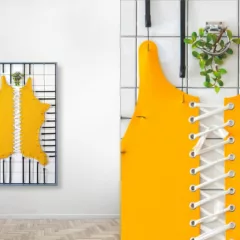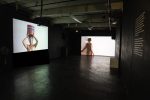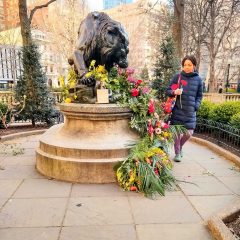At Vox Populi this month, member artist Linda Yun and guest artists Leticia Bajuyo and Joshua Hamilton explore the formation and fragmentation of memory. The two exhibitions are on view until March 27.
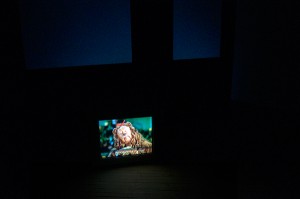
Linda Yun’s Recall uses the shared, cultural memory of classic films to affect the viewer’s experience. Two televisions playing It’s A Wonderful Life and The Wizard of Oz sit on the floor shrouded in darkness and separated by a wall that has two cutout windows in it. Because of the proximity of both monitors, the sounds of each film become layered. This layering complicates the viewing experience and forces one to consider the complexity that is inevitably lost with memory.
The viewer’s position within the space also points to the insufficiency of memory. The cutout windows in the partition wall frame viewers in the space, illuminating each by the television’s reflected light and color. Because of this framing and illumination, these cut-out scenes compete for the viewer’s attention. Unlike the act of watching a screen in secluded darkness, the presence of other viewers disturbs the viewing experience. Together with Yun’s layering of sound, these competing scenes suggest a capacity for recollection that will never equate with lived experience.
Both films suggest a simpler time free from technology’s complications. Both stories offer a nostalgic view of American life that can never be reclaimed in technology’s wake.
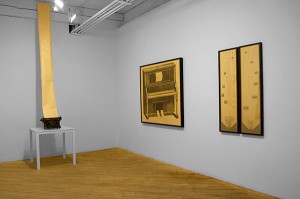
Artists Leticia Bajuyo and Joshua Hamilton also concern themselves with the deterioration of memory. In their installation “Wow and Flutter: Revolutions in Coded, De-coded, and Re-coded Memory” they bring together outmoded technologies and consider their peripheral status. Curated by Joey Yates, the exhibition offers now defunct technologies — the player piano and the typewriter — as the basis for two new collaborative works, “Noiseless” and “Analog Twitter,” in which player piano rolls are fed through typewriters. As the title of “Noiseless” obviously states, the exhibition is without sound. The player piano roll does not serve its intended function as a code to be read as automated music. Instead, only an indecipherable, visual transcription remains.
The burdens of technology are also reiterated in the physical characteristics of the works. Unlike a piece of paper that is usually inserted into a typewriter, the player piano roll is sprawling, commanding attention and overwhelming the viewer. This feeling of being overwhelmed by technology is most present in “Noiseless.” Numerous rolls of paper are tightly jammed into the typewriter and read as information overload. This glut of information speaks to our own increasingly filled-up electronic devices. Our dependency on these devices for information fuels our constant demand for progress and more sophisticated technology.
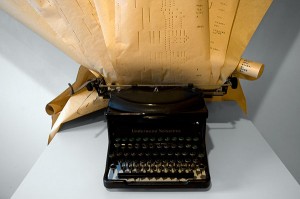
By combining player piano rolls and typewriters, Bajuyo and Hamilton re-purpose these old technologies and create visual poetry.
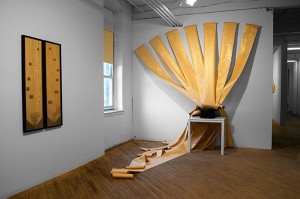
In Joshua Hamilton’s individual works, “Nocturne,” “Cemeteries” and “Soledad,” the artist types passages from poet Juan Ramon Jimenez’s Diario de un poeta reciencasado (Diary of a Poet Recently Married) as well as his own journal entries on draped scrolls of player piano paper. Like Yun’s layering of sound, this combining of text from different sources complicates the viewing experience and adds to the feeling of being overwhelmed.
Leticia Bajayo’s individual works also contribute to this feeling of being overwhelmed. Her framed player piano rolls seem like historical documents to be analyzed and preserved. In “Player Piano Diagram” the artist illustrates the self-playing instrument. Despite the drawing’s seemingly straightforward objective to provide a diagram, the work points to the limited information that can be gleaned from a representation. The artist’s other works also adopt an analytical approach, providing more information and forcing us to recognize our own historical distance and lack of understanding.
The cut-out spaces in the artists’ individual and collaborative works that are ordinarily read as music look as if someone has cut words from the page. This indication of lost information points to the eventual replacement of technology. While new systems are favored, the remnants of these obsolete technologies remain. For Bajuyo and Hamilton, our memories of these systems allow us to reconsider their initial use. By re-purposing the obsolete, the artists offer new possibilities and question the seemingly finite solutions that coded systems propose to offer.



